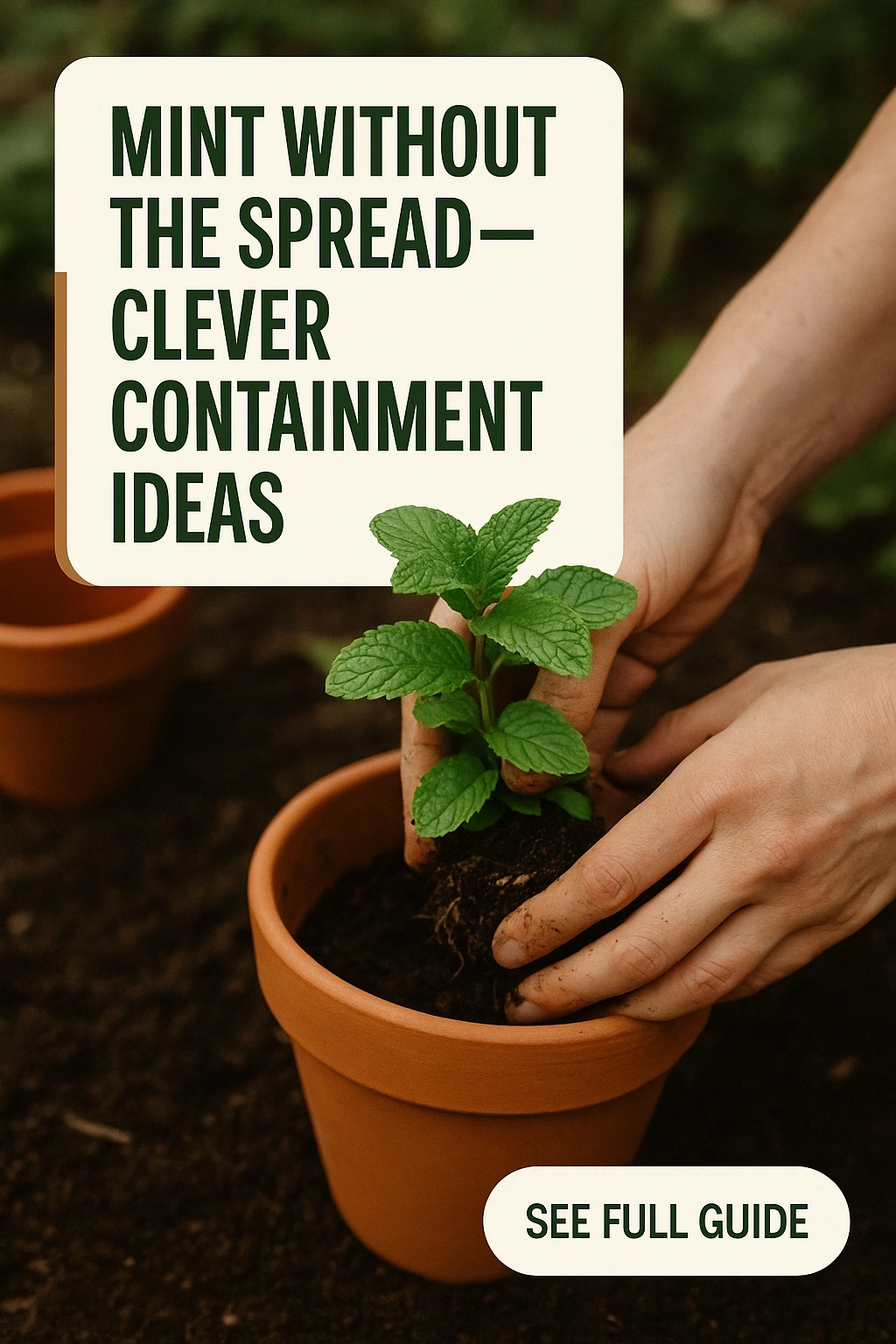
Minting without the spread can be an innovative approach to containment that offers various practical applications. This article delves into clever ideas for containing mint plants effectively while avoiding the common pitfalls associated with spreading. From traditional garden beds to creative containers, we explore various methods that ensure your mint thrives without taking over your garden space. Whether you are a seasoned gardener or a beginner, these strategies will help you enjoy the fresh flavor of mint without the hassle of uncontrolled growth.
The Nature of Mint Plants
Mint is a vigorous herb that belongs to the Lamiaceae family. Its rapid growth and tendency to spread can often become problematic in a garden setting. Understanding the characteristics of mint is essential for effective containment. Mint produces runners or stolons that allow it to propagate quickly, often leading to overcrowding and competition with other plants. To successfully grow mint, it is vital to implement containment strategies that keep its growth in check.
Effective Containment Strategies
When it comes to containing mint, several effective strategies can be employed. Each method offers a unique way to manage growth while still enjoying the benefits of this aromatic herb. Here are some of the most popular strategies:
1. Planting in Containers
One of the simplest ways to contain mint is by planting it in containers. This method allows for easy management of the plant and helps prevent it from spreading uncontrollably. Choose a large pot with drainage holes and fill it with well-draining potting soil. This setup not only restricts the roots but also allows you to move the container to different locations as needed.
2. Using Raised Garden Beds
Raised garden beds can be an effective way to contain mint while adding a decorative element to your garden. By building a raised bed with a solid bottom or lining it with landscape fabric, you can restrict the mint’s roots. This method keeps the plant’s growth in check while facilitating good drainage and soil quality. Ensure the raised bed is at least 12 inches deep to provide enough space for root development.
3. Employing Root Barriers
Installing root barriers is another effective strategy for containing mint plants. These barriers can be made from various materials, such as plastic or metal, and are buried in the ground around the mint to prevent it from spreading. The barrier should be at least 12 to 18 inches deep to ensure that the runners do not escape. This method is particularly useful for gardeners who want to plant mint in the ground alongside other plants.
Creative Containment Solutions
If you’re looking for more inventive ways to contain mint, consider these creative solutions that not only control growth but also enhance your garden’s aesthetics:
1. Hanging Baskets
Hanging baskets are an excellent way to grow mint while keeping it off the ground. This method prevents the runners from spreading and allows for easy harvesting. Choose a sturdy basket with good drainage and fill it with potting mix. Hanging baskets can be placed in sunny spots, ensuring the mint receives adequate light while remaining contained.
2. Vertical Gardens
Vertical gardening is a trendy solution that maximizes space while keeping your mint contained. Consider using a vertical planter or a wall-mounted system to grow mint. This approach not only restricts growth but also adds a unique visual element to your garden or patio. Ensure the vertical system has proper drainage and is positioned to receive adequate sunlight.
3. Edible Landscaping
Incorporating mint into an edible landscaping design can provide both beauty and functionality. By strategically placing mint among other plants, you can create a natural barrier that discourages its spread. For example, plant mint near taller plants that can shade it slightly, helping to control its growth while still enjoying its flavor and aroma.
Maintaining Your Mint Containment
Once you have chosen a containment method for your mint, proper maintenance is essential to ensure its health and prevent unwanted spreading. Here are some key maintenance tips to follow:
1. Regular Pruning
Regularly pruning your mint will help keep it contained and promote bushier growth. Trim back any overgrown stems and remove any flowers that may appear. This practice not only maintains the plant’s size but also encourages the production of more flavorful leaves.
2. Monitoring Soil Moisture
Mint prefers consistently moist soil, but overwatering can lead to root rot. Monitor the soil moisture regularly and water only when the top inch feels dry. Ensuring proper drainage is critical to maintaining healthy mint plants.
3. Fertilization
Mint benefits from occasional fertilization, especially when grown in containers. Use a balanced, water-soluble fertilizer every four to six weeks during the growing season. This will promote healthy growth without encouraging excessive spreading.
FAQs
Can I grow mint indoors?
Yes, mint can be successfully grown indoors in containers. Ensure it receives adequate sunlight and maintain consistent moisture in the soil.
What are the best types of mint for container gardening?
Popular varieties for container gardening include spearmint and peppermint, both of which offer distinct flavors and fragrances.
How often should I water my mint plants?
Water your mint plants when the top inch of soil feels dry. Mint prefers consistently moist soil, but avoid overwatering.
Can I grow mint in a garden bed with other plants?
Yes, but it is advisable to use root barriers to prevent mint from overtaking other plants. Regular maintenance is also needed to keep growth in check.
Is mint invasive?
Mint can become invasive due to its rapid growth and spreading nature. Implementing containment strategies is essential to manage its expansion in the garden.
